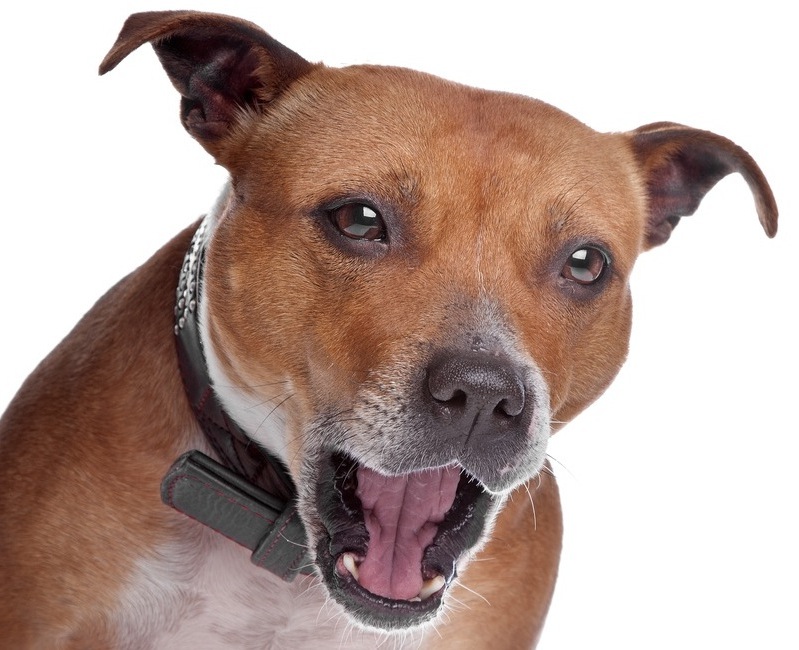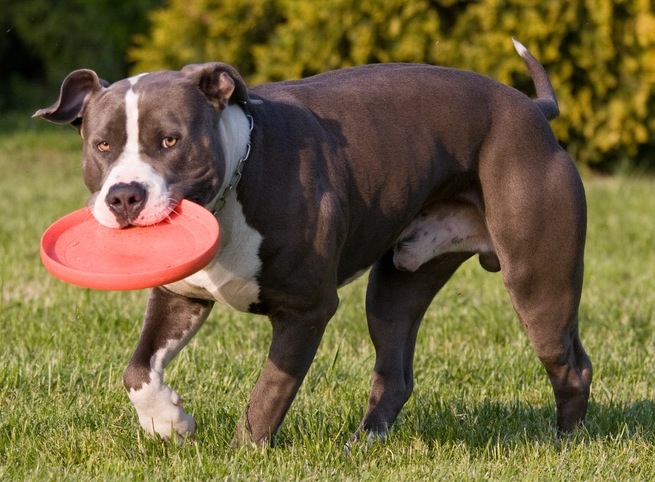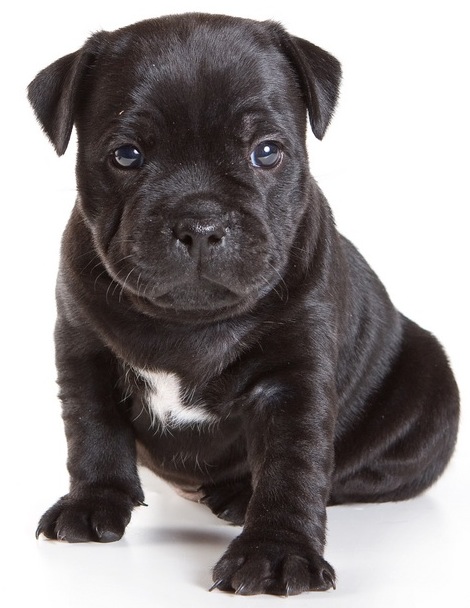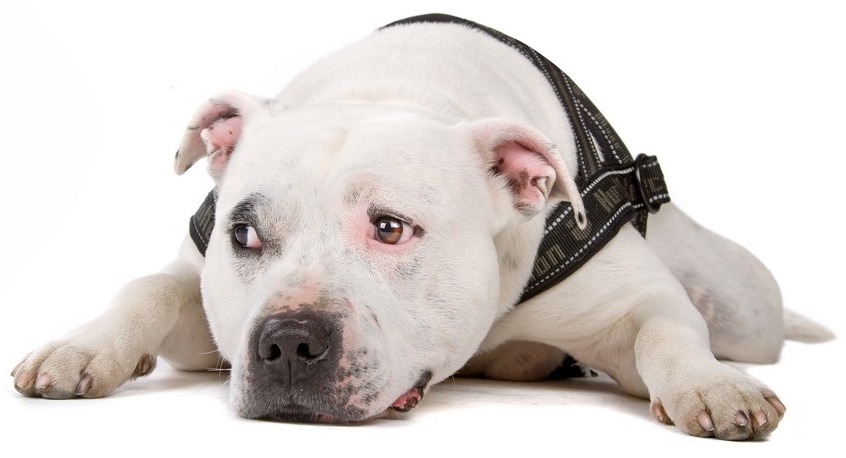Staffordshire Bull Terrier

This breed is named after the English county of Staffordshire in the Midlands where it was first bred during the early 1800s. The Staffie’s popularity has grown to such an extent that it is now one of the most widely-kept breeds in Britain today, even if many of these dogs are not officially registered with the Kennel Club, so it is hard to get a realistic impression of their numbers.

It has also contributed to the ancestry of related dogs, such as the American Staffordshire bull terrier (also known as the AmStaff), which has developed into a noticeably heavier breed, as shown right.
Origins
Fearless and strong, the Staffordshire bull terrier was originally the result of a cross between an old English type of terrier, and the bulldog, which used to be a much more athletic dog than the breed of this name that is recognised today. It was originally created as a fighting dog, and soon became renowned for its powerful jaws and an aggressive nature, particularly towards others of its own kind.
These characteristics also made it a popular choice at ratting contests. At one such gathering held during 1853 in Liverpool in the north-west of England, a Staffordshire bull terrier called Jenny Lind managed to kill 500 rats in just 96 minutes - equivalent to one rat every 11.5 seconds! The breed retained its aggressive reputation to such an extent that the Kennel Club refused to recognise it officially as a breed until 1935.

Breeders have since worked hard to reduce the combative instincts of this terrier, while retaining its courage, loyalty and intelligence. Their efforts have meant that Staffies have become more popular with people seeking a loyal and lively breed as a pet. Puppies are often very destructive though, and should be provided with a good range of toys.
The Staffordshire’s natural exuberance means that it needs plenty of opportunity to exercise. As these bull terriers can still display a tendency to pick squabbles with others of their own kind, so they are best walked in areas where they are not likely to meet too many other dogs. Even a placid, well-socialised individual is likely to respond aggressively if challenged, and should a fight start, then it can be very hard to separate the dogs.

Staffordshires weigh about 13kg (29lb) on average, with dogs being slightly heavier than bitches. They stand about 38cm (15in) tall at the shoulder. In terms of colouration, these terriers have been bred in a wide range of colours including fawn, black, blue-grey or red, sometimes with white markings, as well as brindle (brown and black) or brindle and white.
Factbox
Grooming needs: Straightforward, thanks to its short coat. Watch for any swelling though - these could indicate mast cell tumours, to which the breed is vulnerable.
Ease of training: Challenging in terms of relationships with other dogs, but keen to learn and also playful.
Health concerns: Beware of pure white Staffordshire puppies, as they are usually afflicted by an incurable, congenital deafness. At risk from hereditary cataracts, but DNA screening (see below) can eliminate this risk.
Best suited to: Couples without children, as the breed requires firm and consistent management.
Did you know? Staffies can suffer from L-2-hydroxyglutaric aciduria (L2HGA). This is a metabolic disease, causing neurological symptoms, which may become apparent quite early in life, from 6 months onwards. Signs can include unsteadiness on the feet, tremors and even epileptic-like convulsions.
Some individuals carry the faulty gene yet cannot develop the disease, but they must not be allowed to mate with another carrier, as otherwise, their offspring are likely to be affected. All potential breeding stock should be subject to a DNA test therefore, to safeguard the health of their puppies. This will also help to ensure the disease is eliminated from bloodlines in due course.